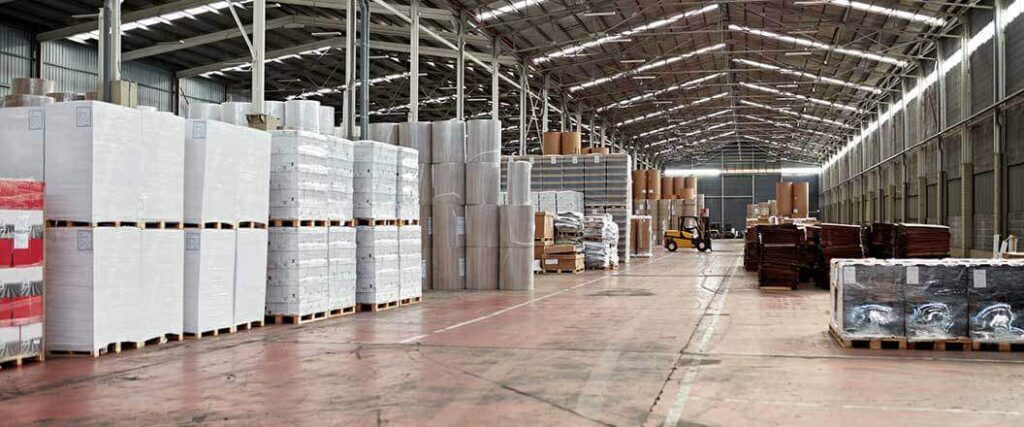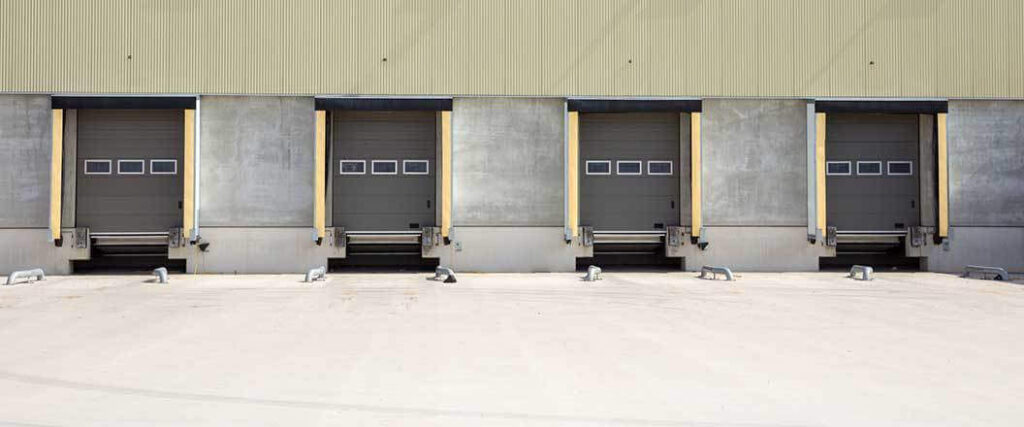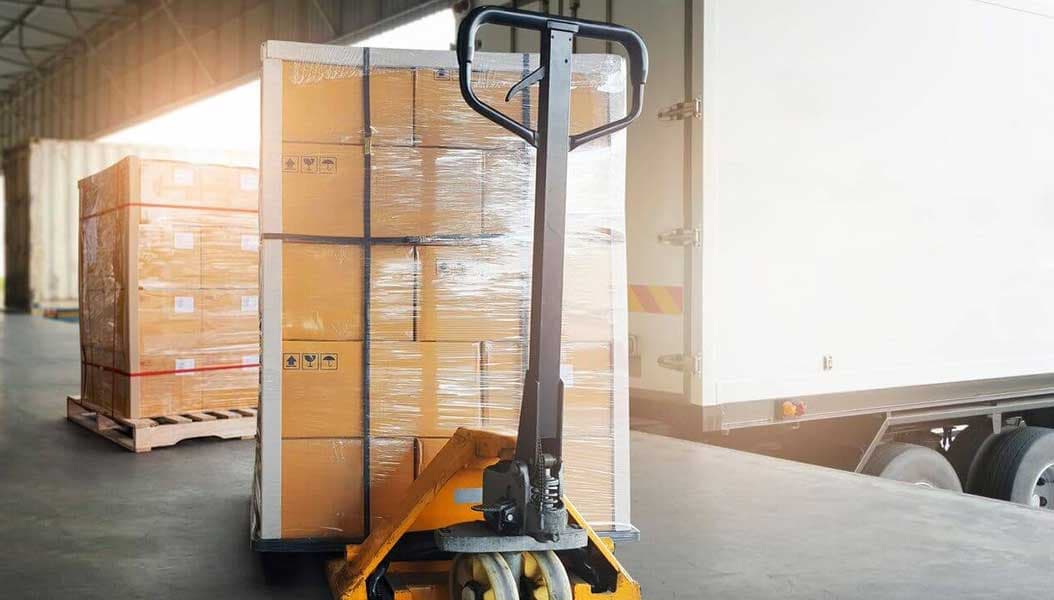If you are running a warehouse or a logistics supply line, comparing cross docking vs traditional warehousing should be one of your most important considerations. It’s crucial when working in the logistics industry and warehouse management that you keep processes efficient and fast. This ensures that you are offering the best solution to your customers and clients.
Cross docking vs traditional warehousing: While traditional warehousing involves storing inventory for long periods, cross docking eliminates or minimizes storage time. It also streamlines processes, reducing handling and transfer times, resulting in faster order fulfillment, improved inventory management, and overall efficiency gains.
This guide provides all the information you need to know to choose between cross docking and traditional warehousing. That includes an expansive description of cross docking, the benefits of both systems, and why you might choose to implement either into your own logistics business model.

What is Cross Docking Warehousing?
If you are exploring different logistics procedures, then you will almost certainly find cross docking as an option. With this procedure, products from a manufacturer or a supplier go straight to the customer or the retail chain. This limits levels of handling and results in little to no storage time.
What Does Cross Docking Mean in Warehousing?
Cross docking takes place at a distribution docking terminal. These terminals are built with doors on both the inbound and outbound sides to guarantee a smooth transaction. The name cross-docking is also a description of how products are received from the inbound dock, which are transported through to the outbound area for transportation.
To put it simply, products arrive by truck or other vehicle, where they are placed in a dock that has been allocated. Any products can then move directly or indirectly to the outbound section.
A range of warehouse equipment can be used to move items from one truck to another, including:
- A forklift
- Conveyor belt
- Pallet truck
- And more
Anything that makes the process smoother and keeps goods moving can find a place among warehouse equipment.
Traditional Warehousing
In contrast with cross docking, traditional warehousing involves storing products for long periods of time. Multiple teams of pickers, packers, and putaway specialists work in concert to distribute stored products. This is a long-term storage solution that is best used when products aren’t being shipped directly to the end user.
Why is Cross Docking Used?
There are many situations where cross-docking warehousing could be an ideal solution. For instance, you might be transporting temperature-controlled items. In a case like this, making the process of delivery as rapid as possible could be a tremendous benefit.
Alternatively, you might have products that are already packed and ready for transport to the customer. This is another key example of where cross-docking would be useful, as there’s no need for them to be transported into the main warehouse.
Types of Cross Docking
The two main types of cross docking are called pre-distribution and post-distribution.
| Pre-Distribution Cross Docking | This strategy is used when the cross docking warehouse knows the final destination of cargo prior to its receipt. Items are unloaded, repackaged, and quickly transported to an outgoing truck. |
| Post-Distribution Cross Docking | Items are warehoused at the cross docking facility temporarily while end users are identified. |
Other reasons to use cross docking include:
- Creating a central system - With a cross-docking warehouse, it is possible to build up a centralized system. Products can then travel to various destinations from this location quickly. This is sometimes called a ‘hub and spoke method’.
- Reducing transportation costs - With this option, significant transportation costs are greatly reduced. A number of smaller transports can be combined in a system where processes are consolidated.
- Breaking down product loads - Larger product loads can be broken down through this system. The aim here is to ensure that there is an easier delivery process that benefits the customer. The process is described as a ‘deconsolidation arrangement.’
Essentially, any shipment that doesn’t require long-term storage can probably benefit from this expedited shipping solution.

What is a Cross Docking Example?
To explore an example, we can examine the pharmaceutical sector: specifically, Roche Diagnostics.
The business is one of the leading pharmaceutical companies, particularly for hematological and Vitro diagnostics. They worked with a warehouse storage solution agency with the aim of increasing the efficiency of their distribution center. The center in question was located in Barcelona.
When exploring industries that benefit from cross-docking, the pharmaceuticals sector is near the top of the list. There are two main reasons for this.
The first is that medication needs to be held in an environment where the temperature is controlled. So, cross docking immediately helps avoid issues here.
The other is that it ensures that the supply of stock can be managed quickly and effectively. This was particularly relevant for Roche Diagnostics because 60% of their items were perishable and required same-day deliveries.
What is Cross Docking in Inventory Management?
To understand how cross docking fits as part of inventory management, it’s important that you know what this actually is. Inventory management is a crucial part of your supply chain.
It will include key decisions and variables such as:
- Controlling and overseeing specific purchases - both from suppliers and storage
- Maintaining stock
- Controlling the amount of product for sale
- Order fulfillment
Inventory management is crucial to operational efficiency. If you don’t ensure that you are engaging in inventory management correctly, then you will struggle with heavy costs, low profits and low levels of customer service.
Cross-docking can be a part of inventory management, however, it also eliminates the need and indeed the option of extensive management in this area. With cross docking, there is a reduced amount of time and infrastructure that will be necessary to manage the inventory. To maintain operations and profitability, it will be vital to ensure that there is a steady level of goods arriving at the inbound docking station. Despite this, inventory management can be incorporated in a variety of ways. This includes supply chain management software as well as a warehouse management system or a transportation management system. Set up correctly, cross docking can also make managing and recording inventory an easy process that reduces errors and shipping delays.
What are the Benefits of Cross Docking?
- The first benefit is that cross docking reduces the size needed for your facility. That’s due to the fact that there’s very little storage. So, you reduce the footprint and any costs associated with this. Of course, this also means that the costs of storing inventory decreases as well.
- You’ll see significant reductions in material handling, too. This is going to be limited to just staging, loading, and unloading. You won’t have to worry about high levels of putaway activity or picking.
- You can also ensure that customer product quality is improved through effective management. During the staging and unloading process, it’s possible for staff to inspect inventory and check whether it has suffered any damage during handling. This can help ensure that customer satisfaction levels are significantly improved.
Since there is a lower level of material handling required with this type of setup, this translates directly to labor cost savings. As such, your business will be able to pass on savings to customers. In doing so, you can make sure that you don’t have to worry about issues such as customers facing heavy costs that could turn them away from your company and towards the competition.

Difference Between Cross Docking and Traditional Warehousing
You might wonder how warehousing and cross docking differ. Well, there are a few factors that you should keep in mind here. It’s perhaps worth beginning by thinking about size. As already mentioned, the typical cross dock facility is going to be significantly smaller than a standard warehouse.
Furthermore, with the typical warehouse, you will need a distributor on hand ready to take on the stock and move it to the customer or the retail business. Cross docking doesn’t involve a distributor like this and doesn’t have massive levels of stock on hand that need moving. Instead, it’s all completely streamlined and products move rapidly through the docking terminal.
Of course, the key difference to be aware of between the two different systems is the speed with which products move in and out of the warehouse. With cross docking, products move far more rapidly through the warehouse.
With the typical warehouse, they can be left at the location for months on end. This is again due to the importance of having a build-up of stock that can readily be sent out to customers, even at short notice. This can be looked at as a potential advantage of traditional warehousing.

How Does Cross Docking Reduce Storage and Handling Costs?
Above, we discussed the benefits of how cross docking is going to help you reduce the level of storage needed and eliminate handling costs. It is now worth exploring how this works and more importantly why it’s effective.
One of the reasons why there is a lower level of storage is due to the fact that products are moving so rapidly through the system. There is no chance for items to be stored for lengthy periods. The terminal won’t even typically be set up for this requirement.
Instead, it’s far more likely for items to constantly be passing through from one terminal and shipped out. Again, this does bring the added benefit of less need for storage space. This will only work in a system where products are consistently ready to be shipped out to customers and clients.
How does this impact handling? Again, the products actually receive very limited levels of handling aside from being sorted and distributed to the appropriate terminal. With the right set up, much of the supply chain can be fully automated.
This will reduce the need for extensive levels of labor as well. It guarantees that businesses can benefit from a system that requires lower costs and actually helps increase profits. However, for this to work, you will need to invest in some of the tech that we mentioned above.
Advantages of Cross Docking vs Traditional Warehousing
There are many advantages of cross docking that you should be aware of when you are exploring this option for your business. As already mentioned, many costs are going to be significantly reduced.
If you have a logistics partner, you will be renting space for the storage of your inventory. That means that the more time an item is kept in the warehouse, the more it’s going to cost you. With cross docking warehouses, items are constantly on the move, as long as you have a system where they can be delivered to customers immediately.
This also means that there are going to be faster shipping times. That’s going to be a huge benefit for your business and help you gain a competitive edge. Remember, there is a lower level of human interactions with products. Human error is often the source of issues that slow your system down.
With cross-docking, you can provide on-demand shipping that is going to impress your target audience and ensure that they are thrilled with your performance.
Traditional warehousing involves multiple teams in the logistics process. This issue is almost completely avoided when you explore the option of cross docking. Instead of one team for trucking and another for parcel deliveries, it can all be handled by the same partner. They’ll take care of everything for you and guarantee that you have an efficient system that you can rely on.
All you need to do is find the team that will provide the service that you need. It can be difficult choosing the right company, and it’s important to find one that will match your own standards of service.
Cross Docking with Transload Services USA
Are you looking for a business that can provide you with the ultimate cross docking solution? If so, then we can help. We provide 3PL warehouse solutions that will be suitable for businesses in a wide range of different businesses and sectors. Our aim is to offer the ultimate, stress-free solution that tackles all the issues that you may have been dealing with on the market.
As a 3PL warehouse solution, we can handle everything for you with ease. This includes:
As a cross docking warehousing solution, we can make sure that your products are delivered fast without delay. We will also provide a system that minimizes errors and guarantees a high level of customer satisfaction that you want in your business model. With advanced technology, a passionate team, and exceptionally high standards, we are the ultimate logistics partner you need for your business.
Contact us at (352) 282-4588 or get a quote online and get your products on the move.

